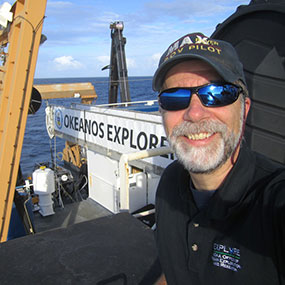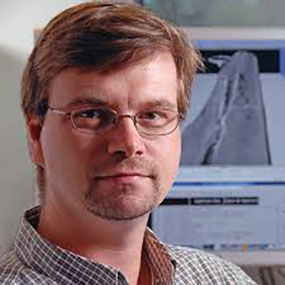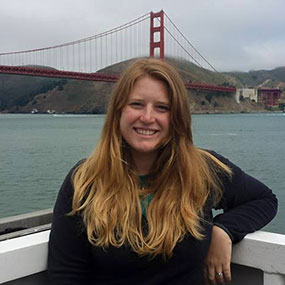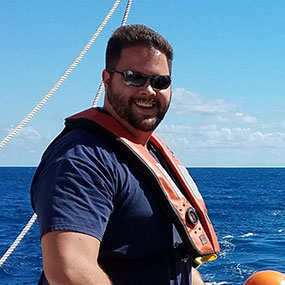
This media resources page provides members of the media with information; resources; and broadcast-, print-, and web-quality imagery developed during the Mountains in the Deep: Exploring the Central Pacific Basin expedition.
From April 27 - May 19, NOAA and partners will conduct an ocean exploration expedition on NOAA Ship Okeanos Explorer to collect critical baseline information about unknown and poorly known deepwater areas in the Pacific. The expedition begins in Pago Pago, American Samoa, and ends in Honolulu, Hawaii. The ship will conduct near daily remotely operated vehicle (ROV) dives in the Kingman Reef and Palmyra Atoll and Jarvis Island Units of the Pacific Remote Islands Marine National Monument (PRIMNM), now known as Pacific Islands Heritage Marine National Monument; around the Cook Islands Marine Park (Marae Moana); and the high seas.
During the cruise, our at-sea and shore-based science teams will work together to map the seafloor and make some of the first deepwater scientific observations in these areas. Live video of dives can be viewed online in real time from April 27 - May 15, 2017.
The ship will conduct 24-hour operations consisting of daytime ROV dives and overnight mapping operations, including during transit. Mapping and ROV dives with high-resolution visual surveys and limited sampling activities will focus on priority ROV dive sites and mapping areas in and around PRIMNM, as well as dives in the Cook Islands, as the ship transits to the cruise priority areas.
Dive sites are expected to include deep-sea coral and sponge habitats, bottomfish habitats, and seamounts. This expedition will help establish foundational information in the region to catalyze further exploration, research, and management activities.
On this page:
Why? | Who? | Highlight Videos & Images | Press Releases | Background Info | Contact Info
The expedition is part of the three-year Campaign to Address the Pacific monument Science, Technology, and Ocean NEeds (CAPSTONE), a foundational science initiative to collect deepwater baseline information to support science and management decisions in and around U.S. marine protected areas in the central and western Pacific. These areas contain some of the last relatively pristine marine ecosystems on the planet and harbor numerous protected species, undiscovered shipwrecks, and cultural landscapes. Their designation is unprecedented in terms of geographic scope, ecological value, and national symbolism for ocean conservation. However, their remoteness creates substantial challenges. Most deepwater areas remain poorly known and are of high interest to federal and state agencies with research and management responsibilities. To address this challenge, NOAA is conducting a series of expeditions aboard NOAA Ship Okeanos Explorer.
The Central Pacific Basin encompasses some of the most remote areas on Earth. Large swaths of this region have never been mapped using high-resolution mapping systems and the vast majority of these waters remain unseen by human eyes. This expedition will collect critical data to better understand the origin of seamounts in this area and how deep-sea communities are connected.
Located south and west of Hawaii, the Pacific Remote Islands Marine National Monument (PRIMNM) includes approximately 1,269,000 square kilometers of submerged lands and waters. It is one of the largest marine protected areas in the world and an important part of the most widespread collection of marine life on the planet under a single country's jurisdiction.
The unique ecosystems inside the Monument include Baker, Howland, and Jarvis Islands; Wake and Johnston Atolls; Kingman Reef; and Palmyra Atoll. The seven islands and atolls are also designated as national wildlife refuges and sustain a diversity of species including corals, fish, shellfish, marine mammals, seabirds, land birds, insects, and vegetation not found anywhere else in the world.
Only recently have scientists visited the deep waters of the Monument, where they observed previously unknown biological, chemical, and geological wonders of nature. As part of CAPSTONE, Okeanos Explorer has conducted expeditions in and around the Johnston Atoll Unit, the Wake Island Unit, and the Howland and Baker Unit of PRIMNM. This expedition will include the deepest ROV operations to date in the Kingman Reef and Palmyra Atoll Unit, as well as the first deepwater ROV operations in Jarvis Island Unit.
The Monument is cooperatively managed by NOAA's National Marine Fisheries Service and the U.S. Fish and Wildlife Service, with the exception of Wake and Johnston Atolls, which are currently managed by the Department of Defense, U.S. Air Force. To learn more about PRIMNM, see the background essays for this expedition on the history of Howland, Baker, and Jarvis Islands and conversation efforts at Palmyra Atoll and Kingman Reef.
The Cook Islands are comprised of 15 islands, of which 12 are inhabited and three are uninhabited. The multiple-use Cook Islands Marine Park, Marae Moana, was initially announced in 2012, and was expanded in 2016 to include the entire Exclusive Economic Zone - an area of 1.9 million square kilometers. The park was named Marae Moana which translates to "Sacred Ocean." Its purpose is to conserve biodiversity and natural assets in the oceans, reefs, and islands while ensuring sustainable development of economic growth interests.
The expedition will address science themes and priority areas proposed by scientists and managers from NOAA and partners. NOAA priorities for the expedition include a combination of science, education, outreach, and open data objectives that will support management decisions at multiple levels
This expedition is part of the three-year Campaign to Address the Pacific monument Science, Technology, and Ocean NEeds (CAPSTONE), a foundational science initiative to collect deepwater baseline information to support science and management decisions in and around U.S. marine protected areas in the central and western Pacific. Other 2017 focus areas include National Marine Sanctuary of American Samoa, Rose Atoll Marine National Monument, Musicians Seamounts, and the Pacific Remote Islands Marine National Monument, including the Howland and Baker Unit. While the focus of 2017 operations remains within U.S. waters, NOAA is pleased to partner with several Pacific Island countries and will explore the deep waters of Samoa, the Republic of Kiribati's Phoenix Islands Protected Area, the Cook Islands, and New Zealand's Territory of Tokelau.
The expedition involves a number of NOAA partners including National Marine Fisheries Service's Pacific Islands Fisheries Science Center, Pacific Islands Regional Office, and Office of Habitat Conservation's Deep-sea Coral Research and Technology Program; Office of Marine and Aviation Operations; the National Ocean Service's Office of National Marine Sanctuaries, NESDIS National Centers for Environmental Information; and Office of Oceanic and Atmospheric Research's Office of Ocean Exploration and Research.
The individuals listed below will primarily lead activities during the expedition. They will coordinate input from multiple scientists and managers participating from shore to plan dives and are the voices you hear on the live video feeds and the primary participants in outreach events. For a full list of our on-ship team, please visit this page.

Science Lead, University of Louisiana at Lafayette
Scott France studies the evolution of deep-sea invertebrates, in particular in deep-sea octocorals. He was attracted to a career in marine biology when, as a fine arts major at Concordia University, he took an elective course in oceanography and was captivated learning about the discovery of deep-sea hydrothermal vents. That new knowledge drove his desire to visit and explore the deep sea himself, and he immediately switched majors to Biology. Scott earned his B.S. in Biology at Concordia University and a PhD in Oceanography from the Scripps Institution of Oceanography, University of California, San Diego. He has held postdoctoral positions at the Woods Hole Oceanographic Institution, the University of New Hampshire, and Harvard University and taught Evolution at Bowdoin College. He was on the faculty of the College of Charleston from 1997-2003, and has been on the faculty at the University of Louisiana at Lafayette since 2004. Over his career, he has visited the deep-ocean floor off the Mariana Islands, Hawaii, Galapagos, California, Bahamas, and the western North Atlantic.

Science Lead, North Carolina State University
Dr. Del Bohnenstiehl is an Associate Professor in the Department of Marine, Earth and Atmospheric Sciences and a Faculty Fellow in the Center for Geospatial Analytics at North Carolina State University. Much of his research focuses on volcanic and hydrothermal systems in mid-ocean ridge and arc systems, ocean basin seismicity and marine tectonics. He also works collaboratively on issues related to the ecology of sound in the oceans, and he oversees the operation of North Carolina State University's unmanned surface vehicle, which conducts benthic-mapping studies in estuarine environments.
Bohnenstiehl received a B.S. in Geology from Eastern Illinois University (1995), a M.S. in Geology from Vanderbilt University (1998), and PhD in Marine Geology and Geophysics from Columbia University (2002).
Bohnenstiehl has spent many months at sea over the last two decades working in the Pacific, Atlantic and Southern Oceans; however, this is his first time participating on an Okeanos Explorer expedition.

Expedition Coordinator, NOAA Office of Ocean Exploration and Research
Kasey Cantwell is a Field Operations Specialist with NOAA's Office of Ocean Exploration and Research (OER). Kasey has a Master of Science degree in Marine Affairs and Policy and Marine Geology and Gepophysics, and a Bachelor of Science degree in Marine Science and Biology, both from the University of Miami Rosenstiel School of Marine and Atmospheric Science. Kasey is responsible for coordinating telepresence-enabled expeditions conducted onboard NOAA Ship Okeanos Explorer. Since joining OER in 2012, she has coordinated over a dozen expeditions and projects, including multidisciplinary expeditions to the Atlantic submarine canyons, the Marianas, Pacific Remote Islands Marine National Monument, and Glacier Bay National Park.
Beyond deep-sea exploration, Kasey's background includes imagery-based mapping of coral reefs throughout the Caribbean, long-term ecosystem monitoring, and evaluating resource management strategies to improve efficiency and data quality.

Mapping Lead, NOAA Office of Ocean Exploration and Research
A native of Long Island, New York, Mike took a deep interest in ocean science at a young age growing up in and on the water. After graduating from SUNY Geneseo with a degree in geological sciences, Mike continued his education at the School of Marine and Atmospheric Sciences at Stony Brook University. At Stony Brook, he worked on several projects, including acoustic mapping of coastal areas, coastal sediment management, remote sea level monitoring, submarine groundwater discharge, and applying his GIS proficiencies. Mike's M.S. thesis focused on the processing of multibeam backscatter and its relationship to the physical characteristics of the seafloor. After completing a graduate certificate in geospatial science and earning a reputation as a reliable field scientist, Mike started a new position as a hydrographic analyst with NOAA's Sandy Integrated Ocean and Coastal Mapping team at the Center for Coastal and Ocean Mapping (CCOM) at UNH. At CCOM Mike processed outside to NOAA hydrographic datasets, examined additional applications for topobathymetric lidar, collaborated on a seafloor imaging device, and served as a physical scientist supporting hydrographic surveys. As the newest member of the Okeanos Mapping Team, Mike is truly excited to support their mission exploring the oceans. During his off hours, Mike can be found cooking, hiking, or watching movies.
View a collection of images and videos of just some of the amazing creatures and unexpected behaviors we came across over the course of 23 days in the central Pacific.
B-roll of select videos are available for download.
Additional images and video from the expedition can be found here.
Please contact Katie Wagner for high-res footage, B-roll, and other materials at (301) 734-1008 or Katie.Wagner@noaa.gov.
Access LIVE video feeds here
Expedition home page
NOAA ship journeys into remote, deep Pacific ocean
February 14 - NOAA News